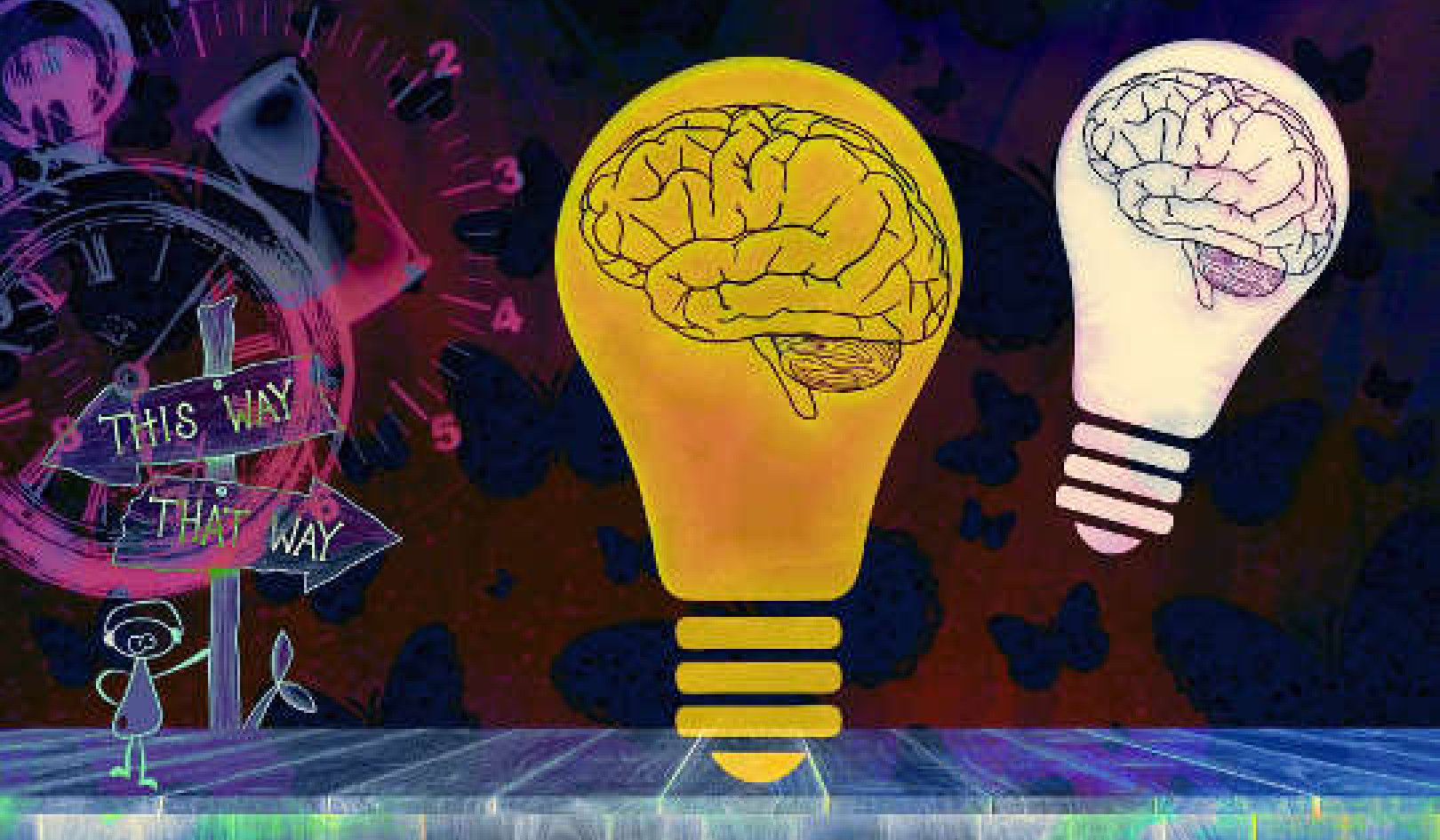We can effortlessly get lost in emotions socially, so it’s both wise and courageous to hone the ability of shifting between emotional and mental communication with others. Let’s explore a few methods for us to keep in mind when braving the necessity of human communication.
Prioritizing Others
It’s essential to know that we get to choose our emotional responses. This can be easier said than done, but with enough practice we can proactively choose to disallow depressive, isolative, and self-deprecating thoughts from overtaking our heartspace.
The act of prioritizing other people throughout daily life is a powerful remedy to combat a self-defeating tendency. We don’t need to take everything in life personally because sometimes it’s just not “about” us. Exercising care for others requires us to second-guess our own insecurities and self-limiting beliefs on a regular, consistent, daily basis.
Highly empathic people genuinely care about others; it’s our nature! When we find ourselves turning inward to an unhealthy degree, we can respond by taking a deep breath and affirming, “I am okay; I can handle this.”
Naturally, the empath must tend to their own emotional garden first and foremost. Incidentally, we can actually cultivate personal emotional healing simply by putting others first—as long as we first know that we ourselves are healthy and safe. The act of prioritizing others’ emotional, mental, and physical safety can do wonders for our own emotional wellness.
It takes a good dose of humility to take up the role of peacemaker, mediator, or caregiver when we aren’t feeling at our best. Just remember: we don’t have to solve everybody’s problems; sometimes it really is enough to provide support by offering a shoulder to lean on ... a listening ear ... a trustworthy connection.
Discerning Communication Cycles
Before we can learn to have accurate and bonding communication with others, we must consciously examine the communication we have within ourselves. Because we are naturally sensitive, it’s far too easy to read into every little thing. This creates a cycle of drama that neither we nor anyone else in our lives actually deserve to deal with!
Sure, it’s essential to communicate concerns, insecurities, and negative thoughts that run through our overthinking minds, but sometimes the mind plays tricks, so we can’t always take our own thoughts at face value.
The world is not against us. In fact, many would say that our daily experiences, including all of their challenges, are karmically aligned. We experience joys and hardships in life that help refine us as individuals. We are often presented with similar cycles of experience on repeat, until we are able to humbly learn the life lessons that are held within the repeating challenge.
These patterns of relationship can occur between friends, lovers, colleagues, family, and even those with whom we seldom interact. We may find ourselves experiencing the same type of challenge over and over with different individuals in our lives.
When we begin to recognize our own reactive patterns—and the cyclical experiences that the Universe seems to be delivering—we can break the cycle with humility and acceptance. But first, we must discern between communicative fact and fiction.
Cyclical Challenges Rooted In Communication
Cyclical challenges are so often rooted in communication, both with others and also within ourselves. Internally, we are constantly faced with the challenge of interpretation. If someone says, “Hey, I like your hairstyle,” we might choose to accept the compliment and allow it to uplift our confidence, even for but a moment.
On the other hand, we might choose to view the statement as something loaded or disingenuous. We might interpret the comment as “they are actually just making fun of me,” or “that means my hair looked awful last week.” Indeed, it’s our choice whether or not to twist something in our minds into something that may or may not exist. And while it’s true that passive-aggressive communication is far too common in society, it’s ultimately up to us to discern whether or not we really need to be reading between the lines.
When we consciously choose positive thinking—even if it feels counterintuitive at first—we find ourselves less affected by criticism. By thinking positively, we choose to maintain a healthier self-image, which in turn disallows negative mental patterns to overtake us. The choice of optimism is especially vital if we have a tendency to believe the worst possible things about any given social exchange.
The mind is not the enemy; in fact, it can be our best friend. When we get to know how our mind ticks, including any pessimistic patterning, our consciousness can actively discern between fact and fiction. From there, our emotions can enter a more balanced state of being.
There’s no sense in replaying the same self-destructive worries over and over in our heads. Admittedly, I have had a longtime pattern of doing this and am likely to combat this behavioral tendency for years to come. However, I’m getting better at recognizing these mental patterns on a day-to-day basis, and I encourage you to try the same.
One thing I’ve noticed in the past is that I’m prone to obsessing about difficult social experiences and self-limiting beliefs because my mind wants to problem-solve. There is a positive side to this, in that it involves a willingness to put things on the table instead of emotionally repressing. But it’s a fine line. If we are not able to come to a solution in the here-and-now, there’s no sense in getting worked up about something that can’t be immediately remedied.
Obsession can cloud the mind, convincing us of numerous horrors that are actually far off base from reality. If we can instead respond with patience and trust, we will be more equipped to problem-solve when time allows.
Socially Engaging: Body Language and Vocal Tone
When it comes to socially engaging, remember that the vast majority of interpersonal communication comes from body language and vocal tone. This is why emails and texts are so impersonal, not to mention dreadfully easy to misconstrue.
When communicating in person, try bringing mindful awareness to the body language and vocal tone of yourself and the other party. Notice the empathetic exchange that occurs between yourself and the other as a result of these factors.
Simultaneously, become mindful of your own body language, including your posture, facial expressions, eye contact, and nervous tics. Observe how your vocal tone affects the whole conversation, and decide whether or not you are projecting an empathically constructive or destructive energy outside of the mere words being spoken.
Self-awareness during communication can be difficult because there are so many factors at play. Communication occurs on multiple levels all at once. We are social creatures by nature. When the ins and outs of communication seem altogether overwhelming, keep in mind that it’s a process. We don’t have to be perfect, and we can learn from mistakes. Also, rest assured that you have been communicating with others all your life, so it’s simply a matter of adaptation. Adaptation is evolution.
When a person cannot accurately gauge our emotional state, and when they cannot read our social cues, they are likely to see us as “dangerous” on a subconscious level. This is animal instinct. When we feel as though we can read or understand a person, it creates a level of safety. When we know where another person is “at,” we can make informed decisions based on the level of comfort we feel.
The more comfort and trust there is, the more vulnerable and honest we can choose to be. This is why relationships of any type take work, dedication, and a two-way focus on total honesty.
Empowered social engagement occurs when we feel confident in our empathic abilities. It is by bringing acute self-awareness to our own methods of communication that we can instantly shift the energy of an exchange from one of total emotional absorption to something more reciprocal.
Exercise: Absorptive & Projective Empathy
Empathy is not merely the ability to absorb and “become” emotions from external sources. No no no; this is a terribly self-limiting belief! A healthy empathic experience is one of emotional reciprocation; not a one-way street of emotional victimization.
In order to remove ourselves from these perceptive limitations, it’s essential that we take a step back and monitor the flow of emotions throughout daily life. More often than not, emotional exchanges happen at a rapid rate that makes it challenging to see exactly how these energies are interplaying. Not to mention, we are so accustomed to communicating that we take for granted all of the different levels of communication that occur simultaneously in everyday life.
A great step toward accomplishing everyday wellness as an empath is to become aware of the in-flow and out-flow of emotional energy. Because emotions and thoughts are intricately connected, even the mere knowledge of this occurrence is enough to help shift external emotional energy out of one’s body and into the surrounding environment. What’s more, we can actually transform the emotions we have absorbed into something greatly beneficial for ourselves and others; all it takes is a bit of practice and patience.
1. The next time you find yourself in a social situation involving communication between you and another person, bring to mind the energetic flow of the other party with whom you are interacting, especially the emotions you sense them feeling. Casually visualize the other person’s emotional energies entering the left side of your body in a counterclockwise fashion.
2. Pay special attention to how instantaneously these energies enter your body in conversation. Take note of how quickly you project your own energy to communicate and add to the discussion at hand. Notice how quickly this process happens. Simply observe these dynamics without getting too sidetracked: the conversation you’re having is the most important thing.
3. While observing this process, take note of how much external energy you keep held within your own body—in your chakras, in your aura, in your energetic field; call it what you will! Are you equally contributing to the conversation at hand? Are you fully engaged? Are you giving as much as you are getting? How much external energy in this social interaction are you keeping held within your own body and energy centers?
4. Next, when emotional energy enters your body during conversation, visualize it in a blue color. Blue is a color related to the element of water, which is the element that is said to rule empathy and intuition. See this blue emotional energy swirling within you; you will sense where it “settles” in your body. For empaths, it is believed that this energy usually sits within the solar plexus chakra (Manipura) or the heart chakra (Anahata).
5. When external emotional energy settles within your body, see it swirling around your heart or solar plexus; this is because all energy is movement; nothing in life is stagnant. If you are having a relatively pleasant conversation, allow this energy to gain a dose of your inner “white light” and project it out the right side of your body. This sounds like a lot of work, but actually happens quite naturally. In fact, you don’t have to shift your focus away from the conversation; instead, it should allow you to be more fully interactive in the present moment.
6. As you project your own energy outward through the ride side of your body in conversation, envision it entering the other person’s sphere. (It is their own decision whether or not to take the energy into their bodies and reciprocate with conversation.) You may notice their energies entering your body and your own energy exiting yours at the same time. Remember to visualize a little “white light” added to the emotional energy you project in their direction; this is related to the process of emotional transmutation. Again, this process happens very quickly and is a natural element of human communication.
7. During this process of energetic redirection, you will find that these energies follow your words and your mannerisms because these actions are themselves projective: they come from you. As you intentionally add a boost of light to the emotional energies you are projecting, remember that these energies help create your words, and your words help create these energies.
As a strong empath, you are a conduit for emotional energy at all times. You are meant to add your own unique dose of positivity and love to this world, one interaction at a time. By practicing this easy visualization in everyday conversation, you may actually find yourself paying better attention to conversational exchanges. Not to mention, you may discover that your intentional boost of light helps any given conversation remain positive, optimistic, and lighthearted.
©2019 by Raven Digitalis. All Rights Reserved.
Published by Llewellyn Worldwide (www.llewellyn.com)
Article Source
The Everyday Empath: Achieve Energetic Balance in Your Life
by Raven Digitalis
 Enrich your knowledge of empathy and improve your empathic abilities with this captivating, easy-to-use guide. The Everyday Empath offers a well-rounded view of what it means to experience high levels of empathy in daily life. Featuring exercises, examples, and insights, it's an essential resource to have on your shelf.
Enrich your knowledge of empathy and improve your empathic abilities with this captivating, easy-to-use guide. The Everyday Empath offers a well-rounded view of what it means to experience high levels of empathy in daily life. Featuring exercises, examples, and insights, it's an essential resource to have on your shelf.
Click here for more info and/or to order this paperback book.
About the Author
 Raven Digitalis (Missoula, MT) is the author of The Everyday Empath, Esoteric Empathy, Shadow Magick Compendium, Planetary Spells & Rituals and Goth Craft (Llewellyn). He is the co-founder of a nonprofit multicultural temple called Opus Aima Obscuræ (OAO), which primarily observes NeoPagan and Hindu traditions. Raven has been an earth-based practitioner since 1999, a Priest since 2003, a Freemason since 2012, and an empath all of his life. He holds a degree in anthropology from the University of Montana and is also a professional Tarot reader, DJ, small-scale farmer and animal rights advocate. Visit him at www.ravendigitalis.com.
Raven Digitalis (Missoula, MT) is the author of The Everyday Empath, Esoteric Empathy, Shadow Magick Compendium, Planetary Spells & Rituals and Goth Craft (Llewellyn). He is the co-founder of a nonprofit multicultural temple called Opus Aima Obscuræ (OAO), which primarily observes NeoPagan and Hindu traditions. Raven has been an earth-based practitioner since 1999, a Priest since 2003, a Freemason since 2012, and an empath all of his life. He holds a degree in anthropology from the University of Montana and is also a professional Tarot reader, DJ, small-scale farmer and animal rights advocate. Visit him at www.ravendigitalis.com.
Related Books
at InnerSelf Market and Amazon


 Image by
Image by 

























